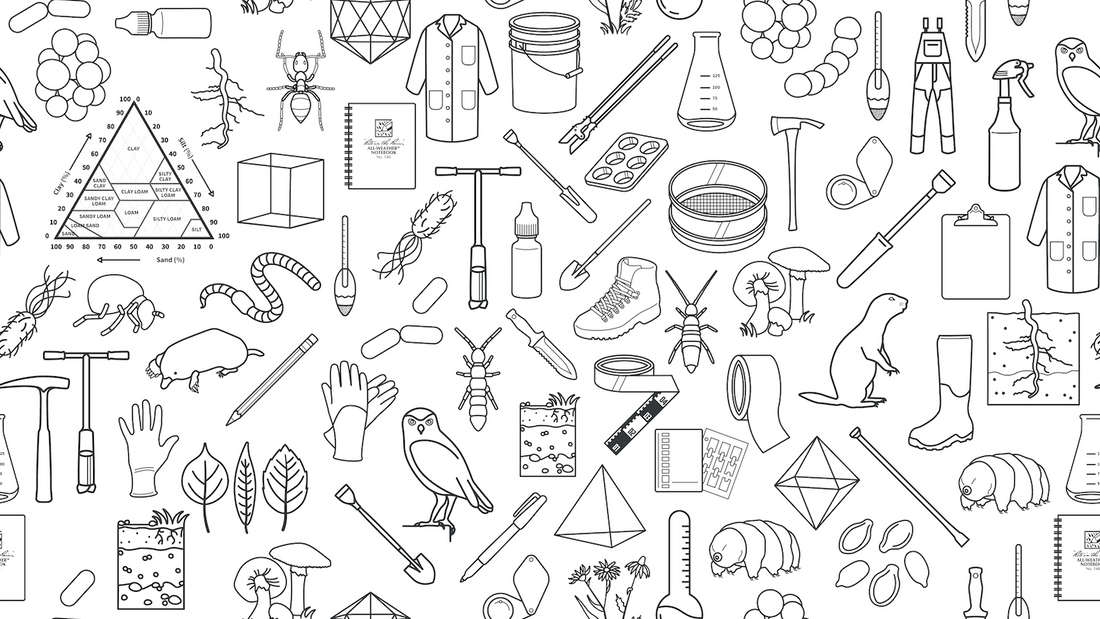I'm so glad you asked. Okay, nobody asked but you’ve probably noticed the icons on our boxes and I’d love to share more about them. Here are a bunch and I'll follow up with more later.
![]()
Earthworm: the mighty, hermaphroditic, iconic soil super hero. An early childhood introduction to our belowground environment that fills children with glee. Earthworms are soil organisms (defined as organisms that spend all or part of their life cycle belowground) that are beneficial in some situations and harmful in others. More about earthworms in the Anthropocene.
Root: the mighty plant part that extends belowground seeking moisture, nutrients, and or stability. Roots are soil also soil organisms.
Tetrahedron: a building block of the crystalline structure of some minerals. For example, silicon tetrahedrons link together to form tetrahedral sheets that layer with other layer silicates to form minerals. More on layer silicates (aka phyllosilicates).
Soil textural triangle: used to determine the soil texture (e.g. clay loam, silt, sandy clay) by plotting sand vs. silt vs. clay on this ternary diagram. All mineral soils are composed of 100% sand + silt + clay. Here's a handy guide to help plot soil texture.
Dropper bottle: used in the field to help carry around small amounts of liquid used to, most commonly, identify particular compounds, for example, 1 M hydrochloric acid is used to test for the presence of calcium carbonate.
![]()
Collembola: a small but might soil organism also called the springtail. This globular example (for more look up Neelipleona) is particularly adorable up close. Please – if you are looking for a moment of joy on the internet, visit a Chaos of Delight.
Montana sharpshooter: a force to reckoned with. This particular shovel is made of steel and meant to break through the roughest of earth. Rocks and dense soil don’t stand a chance against someone digging with one of these, often red-colored, tools of the trade.
Microbe: this particular example is a flagellate which is a cell or organism with one or more flagella or whip-like appendages that aid in locomotion.
Soil profile: a two-dimensional view of the soil. When a hole is dug, this is the cross-section of the soil that soil scientists use to explore and describe the soil morphology (or shapes, colors, forms, horizons). We demarcate layers, or horizons, that are often parallel to the land surface but may also be wavy, broken, and irregular.
Sieve: used to separate larger materials (e.g. roots, rocks) from the soil matrix. A standard sized sieve used in the field has openings that are 2 mm, allowing finer, soil material to pass through, while larger gravels (> 2 mm) are collected in the sieve.

